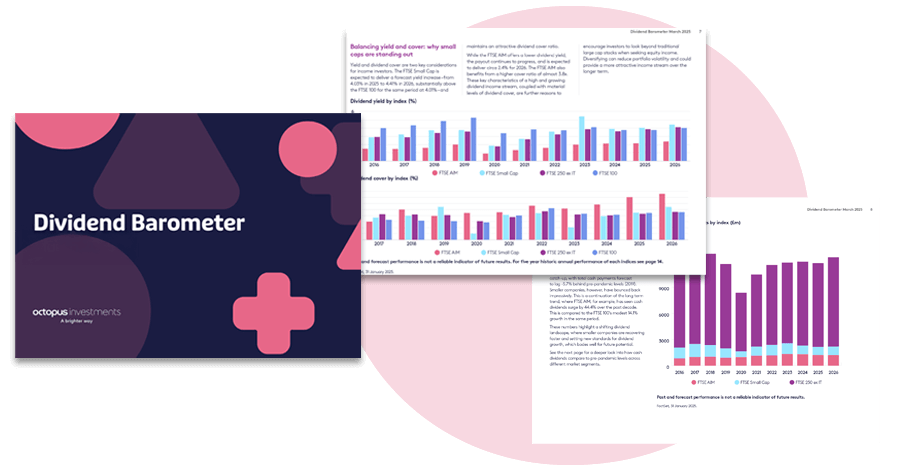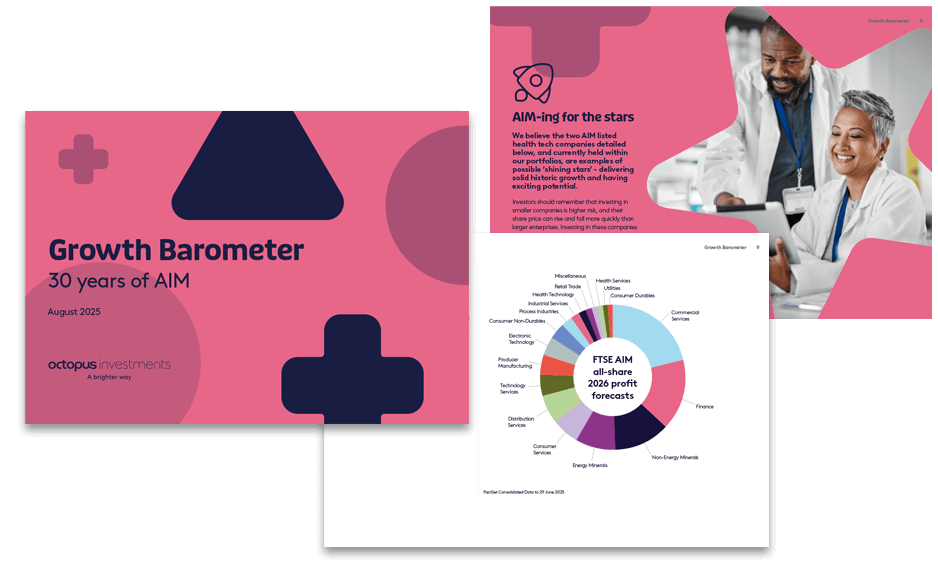WhitepaperBusiness ReliefInheritance tax
What is Business Relief?
Business Relief – key considerations
Last updated: 5 December 2024
What is Business Relief?
Business Relief (previously called Business Property Relief or BPR) is a longstanding relief from inheritance tax. For suitable clients, it allows certain qualifying investments to be left to beneficiaries with relief from inheritance tax (IHT).
Where a Business Relief qualifying asset is held for at least two years and on death, the asset should attract relief from IHT.
For deaths before 6 April 2026, unquoted Business Relief qualifying investments (i.e. unquoted shares, sole traders, partnerships) and AIM BR qualifying investments are free from IHT for an unlimited value of Business Relief asset.
For deaths after 6 April 2026, unquoted Business Relief investments qualify are free from IHT up to £1 million value, and amounts in excess of this are attract 50% IHT relief. AIM Business Relief shares attract 50% IHT relief irrespective of value. See our post Autumn Budget estate planning now and moving forward page for more details.
Please bear in mind that investments that qualify for Business Relief put an investor’s capital at risk and won’t be right for everyone. Tax treatment depends on individual circumstances which could change in the future.
Learn more about Business Relief in our helpful Business Relief explained guide.
What type of assets is Business Relief available on?
What type of assets is Business Relief available on?
Business Relief applies on “relevant business property “ which includes:
- Unquoted companies
- Shares listed on the AIM markets.
- Partnership interests
- Sole trader businesses
What makes a business qualify for Business Relief?
What makes a business qualify for Business Relief?
A company needs to be wholly or mainly trading for Business Relief purposes. If it isn’t, then the relief should not be available. Some people interpret “wholly or mainly” as greater than 50%, but it is a matter where specific tax advice will be needed to determine qualification.
- Holistic approach: HMRC take a holistic approach when assessing the wholly or mainly test. They look at a variety of points, including the context of the business, value of assets, turnover, profits, and time spent by directors and employees in the trading versus non-trading aspects of a business.
- Excepted assets: If a particular business is deemed to be wholly or mainly trading and therefore Business Relief-qualifying, then you need to see how much relief is available. If the company has excepted assets, then Business Relief should be reduced accordingly by reference to those assets. Excepted assets are those not used in the business in the last two years and not expected to be used in the business in the future.
- Change of nature of business: HMRC notes where there is a distinct change in the nature of the trade (e.g. from non-trading to trading), HMRC will only look at a “reasonable period” after the change in trade.
Ask Octopus
Do you have a question about inheritance tax and estate planning?
Use our free helpdesk to Ask Octopus

Business Relief qualification of a group of companies
Business Relief qualification of a group of companies
There are two steps when considering Business Relief across a group of companies:
- Assess whether the holding company qualifies for Business Relief.
- Looking at each subsidiary in turn to see whether they qualify.
Typically, investment businesses do not qualify for Business Relief as they are not viewed as trading. However, there can be an exception for holding companies who are the parents of Business Relied qualifying subsidiaries.
In this case, the holding company needs to be wholly or mainly the parent company of a qualifying group of companies. This means the majority of the group is not making or holding investments. If any of the subsidiaries are not Business Relief-qualifying, then this excludes the value of that subsidiary for the holding company’s wholly or mainly test.
A “subsidiary” is broadly where the holding company has controls(i.e. greater than 50% ownership of the relevant company). A company can’t “invest” in a Business Relief-company with a view of helping its qualification for relief. A company can however operate a qualifying trade. And that can be through partnership interests in a trading partnership. Or by being a holding company of a subsidiary which operates a qualifying trade (which may or may not be through a partnership).
What trades qualify for Business Relief?
What trades qualify for Business Relief?
There aren’t clearly defined rules as to what trades qualify for Business Relief (previously called Business Property Relief or BPR). It is clear what categories of business do not qualify. Namely, businesses wholly or mainly “dealing in securities, stocks or shares, land or buildings, or making or holding investments” should not qualify for relief. HMRC provides some guidance on nuances to consider for investment businesses, such as property businesses.
Business Relief ownership period
Business Relief ownership period
Shares held by an investor in a business need to be owned for two years at the relevant chargeable event. There needs to be a “business” for the whole two-year period until the relevant chargeable event (although HMRC guidance does not say it needs to be a trading business for the ownership test). Note this is just for the two-year ownership test, not the overall Business Relief qualification of the business, which does require a trading status, as explained above. Additionally, the ownership test is only assessed on the business the relevant individual owns, for example shares in a holding company.
Agricultural Property Relief and Business Relief
Agricultural Property Relief and Business Relief
Agricultural Property Relief (APR) provides relief from inheritance tax for agricultural assets, as defined by the APR rules.
Business Relief (BR) provides relief from inheritance tax for relevant business property, as defined by the Business Relief rules.
An asset can qualify for both APR and Business Relief. However, for an APR asset to also qualify for Business Relief, it needs to meet all the conditions for Business Relief (which can differ from the APR conditions), including the need to be run as a trade. Conversely for a Business Relief asset to also qualify for APR, it needs to meet all APR conditions.
For example, if a farmhouse is owned outright, it will qualify for APR at 100%, but it need not necessarily be part of a farming business, so wouldn’t necessarily qualify for Business Relief.
If an asset qualifies for both APR and Business Relief, then you can’t choose which applies first. APR applies as much as possible and to the extent any value is left over Business Relief can apply against the remainder.
Loans to invest in Business Relief
Loans to invest in Business Relief
The rules apply if the transferor has a liability which is attributable, in whole or in part, to financing (directly or indirectly) the acquisition of that property or the maintenance or enhancement of its value.
An investor would need to be satisfied that any loan taken out could not be said to have indirectly funded the acquisition of a Business Relief qualifying property. A loan which is used to live on and has not been used to directly fund an acquisition, but has freed up other funds which were used to acquire a qualifying asset could be seen to have indirectly funded the acquisition.
Potentially, the view would be different if the Business Relief asset was acquired and then a debt was taken out at a later date, but there is a risk that if this debt is used to fund living expenses, it could be said to be maintaining the investment in some form because, absent the debt, the investment would need to be realised to release funds.
Where these rules come into play, the value of the Business Relief asset is reduced by the loan before Business Relief is assessed. These rules are quite broad, such that it can catch loans taken out before or after a Business Relief investment is made.
Tax legislation, rates and allowances are correct at time of publishing for the tax year 6 April 2025 – 5 April 2026.
From 6 April 2026, a 100% IHT relief will continue for the first £1 million of combined agricultural and unquoted Business Relief qualifying property (e.g. sole traders, partnerships, unquoted companies). Amounts over the £1 million will attract 50% IHT relief. Business Relief qualifying companies listed on the Alternative Investment Market (AIM), will attract 50% IHT relief irrespective of the investment amount.
Related resources
Related resources
Autumn Budget Hub
Everything advisers need to translate Budget changes into meaningful conversations and smarter client outcomes.
Business Relief frequently asked questions
We get a lot of questions about Business Relief, so we’ve answered the ones we get asked the most.
Intergenerational planning guide
Who will advise your clients beneficiaries? Read our top tips for retaining assets under advice in the great wealth transfer.





